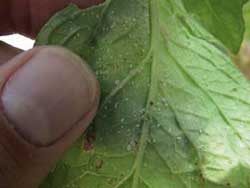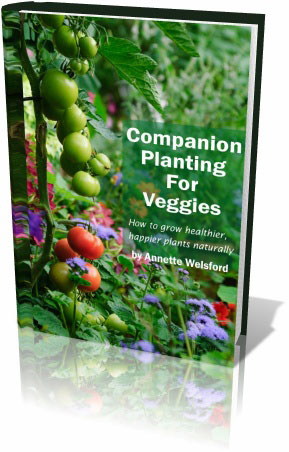Soft Options for Control of Whitefly
Over 500 plant species including vegetables, weeds, ornamental and agronomic crops are attacked by whitefly. Greenhouse whitefly, sweet potato whitefly, and silverleaf whitefly are serious insect pests worldwide.
 Whitefly infestations are the result of the widespread use of broad spectrum insecticides which have killed off their natural enemies.
Whitefly infestations are the result of the widespread use of broad spectrum insecticides which have killed off their natural enemies.
Symptoms
Whiteflies suck sap from plants which results in wilting, leaf loss, stunting and yellowing where sucking has occurred. Whiteflies can also cause uneven ripening and a white internal discoloration in fruit. Furthermore, whiteflies produce ‘honeydew’, an exudate on which the fungus sooty mould grows and which also attracts ants. Sooty mould spoils your plants appearance and leaves ‘soot’ everywhere – another symptom that I am sure many of you have seen.
The Pest
Whiteflies are not as their name implies, flies. They resemble small white moths and many home gardeners and especially greenhouse growers will have seen them quickly rise up in clouds if the plant they are on is disturbed. Likewise, if you examine the undersides of the leaves of affected plants, their scale-like nymphs – which occur in large numbers – can be seen.
Whiteflies are closely related to aphids. There are many species, but one of the most serious is the greenhouse whitefly.
Adult whiteflies can lay up to 250 eggs at a time on the under-surface of leaves. Eggs hatch in about 8 days releasing nymphs or ‘crawlers’ which move around for a few days, but then lose their legs. They insert a feeding tube into the leaf and it is at this stage that they resemble scale. The larval stages are thus sedentary, while tiny (1 mm) adult flies are mobile, moving short distances from leaf to leaf or plant to plant, or they can be carried for miles by wind. Once established, populations can build up very quickly because of their very short life cycle.
One of the biggest problems with whitefly is that they transmit plant viruses which shorten the lifespan of your crop and also cause deformation of foliage and fruit. Most of these viruses are carried throughout the adult life of the whitefly.
Viral Diseases Carried by Whitefly
- Tomato mottle virus
- Tomato infectious chlorosis virus
- Tomato yellow leaf curl
- Tomato leaf curl virus
- Tomato leaf roll virus
- Curly top disease
Biological Control (Natural predators)
- Natural predators of whitefly include damsel bugs, spiders, lacewings, mirid bugs, hoverflies, ground beetles and small birds. The adults and larvae of some ladybirds also feed on whiteflies. Delphastus pusillus, a small black ladybird beetle, will control both silverleaf and greenhouse whitefly. The larvae will consume up to 1000 whitefly eggs in their lifetime but will also feed on nymphs. Habitat (such as perennial plants), needs to be available all year round as a refuge for these predators.
- An important predator and parasitoid of whiteflies is the tiny wasp Encarsia formosa. This is a small wasp which can parasitise up to 100 immature greenhouse whitefly each. In some areas Encarsia is available commercially. It is most likely to be effective inside glasshouses rather than outdoors.
Physical and Cultural Controls
- If you had whiteflies on your tomatoes the previous year, then you need to act early in the spring to control whitefly.
- Vacuuming in the early morning when whiteflies are cold and slow moving can reduce the numbers considerably before they have a chance to lay many eggs. After vacuuming, empty the vacuum bag into a plastic bag and put in the freezer for 24 hours. Since the adult moths can fly easily from one plant to another, do not place infested plant material next to clean plants.
- Whiteflies are strongly attracted to the yellow colour of sticky traps. Hang these above or close to the top of the plants, at the beginning of the season to detect an invasion early. Doors, vents and other openings where whiteflies can enter greenhouses are also good places to hang yellow sticky cards.
- When purchasing new plants, inspect both the upper & lower surfaces. Preventing whitefly infection this way saves problems in the long term. For early-season protection a floating row cover or mosquito netting placed over plants will also prevent them from becoming infected. Handpick and destroy older leaves to remove young whitefly stages. High pressure hosing in the early morning for at least 3 days in a row will also help to reduce numbers – however, this is a high risk strategy that may damage your plants
- Tapping the plants with a stick will cause the whitefly to fly up and onto the traps. Because whiteflies are strongly attracted to the colour yellow, you really shouldn’t wear yellow clothing or you may carry whiteflies from plant to plant.
- You may need to check your phosphorus and magnesium levels, as deficiencies in these nutrients are believed to contribute to whitefly infestations.
- Avoid using a lot of nitrogen fertilizer, including manures, as succulent growth will increase whitefly populations.
Soft Chemical Controls
Whiteflies began showing resistance to synthetic insecticides in the 1980s. This means that ‘soft’ or organic insecticides are a good way of tackling this pest. As soon as adults are noticed, make sure you spray both on top and underneath the leaves. Options include:
- Neem oil every 5 days. Neem oil has been found to prevent the nymph from developing into an adult
- Pyrethrum every 5 days
- Pest oil. You can make your own spray by mixing 1 cup of cooking oil with1 tablespoon dishwashing liquid detergent. Add 1 to 2.5 teaspoons of this solution to 1 cup of water, spray onto plants every 10 days, preferably in the cool of the day
- Home-made hot spray. To make your own, blend one hot pepper, three tablespoons of cayenne pepper and three large onions and one bulb of garlic with one teaspoon vegetable oil. Cover mixture with a little bit of water and let stand overnight. Sieve and put into 5 litre or one gallon container and top it up with water. Spray weekly or more often for heavy infestations.
Finally, it is best to use multiple methods of control at the same time. This is much more likely to ensure your success in controlling this pest.
Tags: organic gardening, pests, white fly












